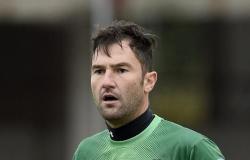The Italian University is on the eve of a period characterized by significant changes that affect its functioning. In the next six months, the Ministry of University and Scientific Research (Mur) is, in fact, called to intervene in various areas that refer to the organizational processes of the university system to better respond to the new challenges that are looming on the horizon. Among these, some require specific interventions and can have a significant impact on both the teaching and user fronts. Below we will try to identify them to highlight how the nature of the change will have significant repercussions for all academic communities and, conversely, also for students and families.
The first “construction site” is undoubtedly represented by the reform of the national scientific qualification (Asn) which represents the way in which teachers “advance” in their career path within the roles provided for by the legislation. The model currently in force, according to the provisions of Law 30 December 2010, n. 240, provides that the recruitment of teaching staff is based on the achievement of the requirement of scientific qualification obtained at a national level. The evaluation of the “scientific maturity of candidates” is also carried out on the basis of indicators recognized for each scientific disciplinary sector by commissions drawn at a national level called to certify the scientific qualification of candidates who, subsequently, can be recruited by the various universities.
As required by law, the major national institutions involved in supporting the ministry in the process of updating the regulations (National University Council-Cun, Conference of Rectors of Italian Universities-Crui and National Agency for the Evaluation of the University and Research System-Anvur) are in recent days by creating documents which indicate actions aimed at improving the functioning of the winner selection system and overcoming the critical issues that have emerged in recent years.
Among the latter, the CUN, for example, highlights how the national level evaluation based on the introduction of rigid indicators, with thresholds calculated over a limited time frame and characterized by a marked volatility, has resulted in a prevalent focus of candidates on the quantity and speed of scientific production, rather than on quality.
Another phenomenon highlighted is represented by the request to place in relevant relation the evaluation methods decided at national level (substantially focused on scientific production) with those of a local nature, which characterize the recruitment by the different universities. With reference to the latter, the indications of the Cun go in the direction of an evaluation by the local commissions based on the research themes covered by the candidate and on the activities carried out in the past in the field of teaching, third mission and internal management.
A second project that will open soon concerns the new role that the ministry is called to design to define the new typology of fixed-term researcher. As is known, after several extensions to the current situation, the issue of defining the methods of selection and support of the first level of classification for university staff (currently Rtt, fixed-term tenure track contracts) appears no longer deferrable also due to the growing number of young post-docs who have carried out research activities in a precarious form and who aspire to be recognized with a role (in a transparent and defined time frame). Beyond the different typologies that the MUR will then be able to define, it is necessary to design a defined initial career path that includes the possibility of accessing forms of evaluation of the research activity that, if positive, leads to situations of stabilization within the Universities or research organizations.
Also in this case, the new regulatory framework will have to clarify the contractual types, the reference timescales, the evaluation methods used, the activities assigned and so on. In short, a set of rules that affect a very large audience of young researchers (doctorates, research fellows, post-doc contracts…) who have been part of the substantial research projects financed under the Pnrr.
A third project, instead, which will have operational implications with the new training offer provided from 2025/26 and which, therefore, will be implemented in the next few months and which, in part, will be adopted by the individual universities. This process of innovation in the field of training content becomes necessary after the Mur approved about six months ago the reform of the teaching regulations with the new degree classes which, in turn, must refer to the new scientific-disciplinary groups (Gsd), approved last May to replace the sectors and macro-sectors of the competition in force until then. With regard to this second aspect, the universities have begun to redefine the classification of the entire teaching staff (first and second level professors, as well as the component of fixed-term researchers) in the approximately 190 new scientific-disciplinary groups, an exercise that should reasonably be concluded in a few weeks.
In conclusion, what is being described appears to be a developing framework where a part of the institutional and organizational mechanisms relating to the higher education system will undergo significant changes and will have non-marginal repercussions on the capacity of universities to qualify their offering in terms of research, teaching and relationship with the social and economic context.
With the explicit aim of making it more efficient and more attractive, both in terms of teaching (better researchers as they are motivated and incentivized) and in terms of the student population (access to degree courses capable of triggering a mechanism of real interest and deep involvement, a prerequisite for solid and useful learning for the purposes of a positive and solid insertion into the working field).
A decisive challenge that has a lot to do with the future of this country’s human capital.
*Professor of Economics and Business Management at the University of Parma, coordinator of Area 13 Committee – Economic and statistical sciences – National University Council






